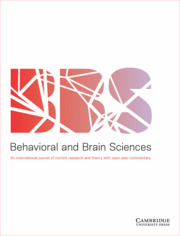Crossref Citations
This article has been cited by the following publications. This list is generated based on data provided by Crossref.
Barque-Duran, Albert
and
Pothos, Emmanuel M.
2021.
Untangling Decision Routes in Moral Dilemmas: The Refugee Dilemma.
The American Journal of Psychology,
Vol. 134,
Issue. 2,
p.
143.

